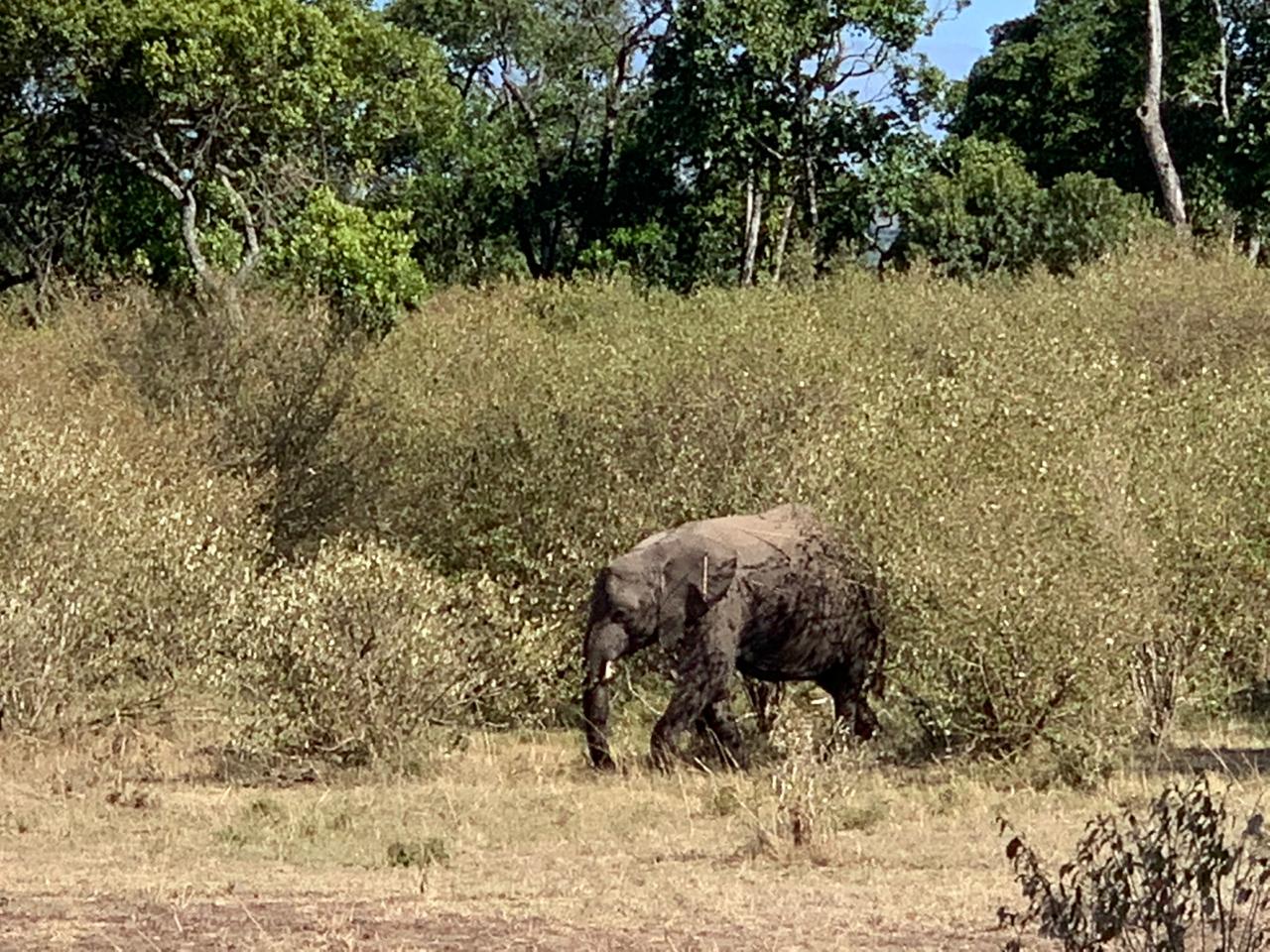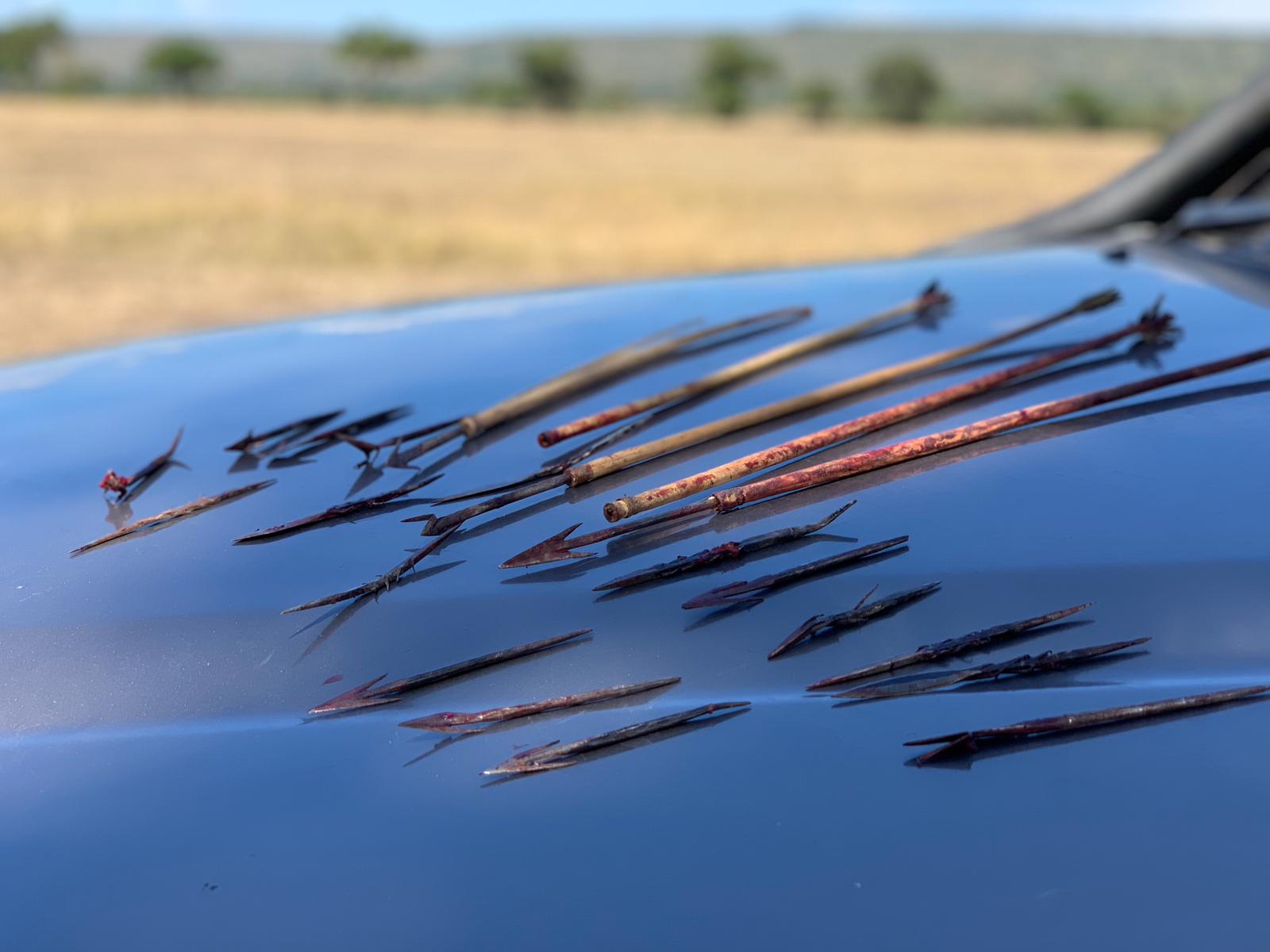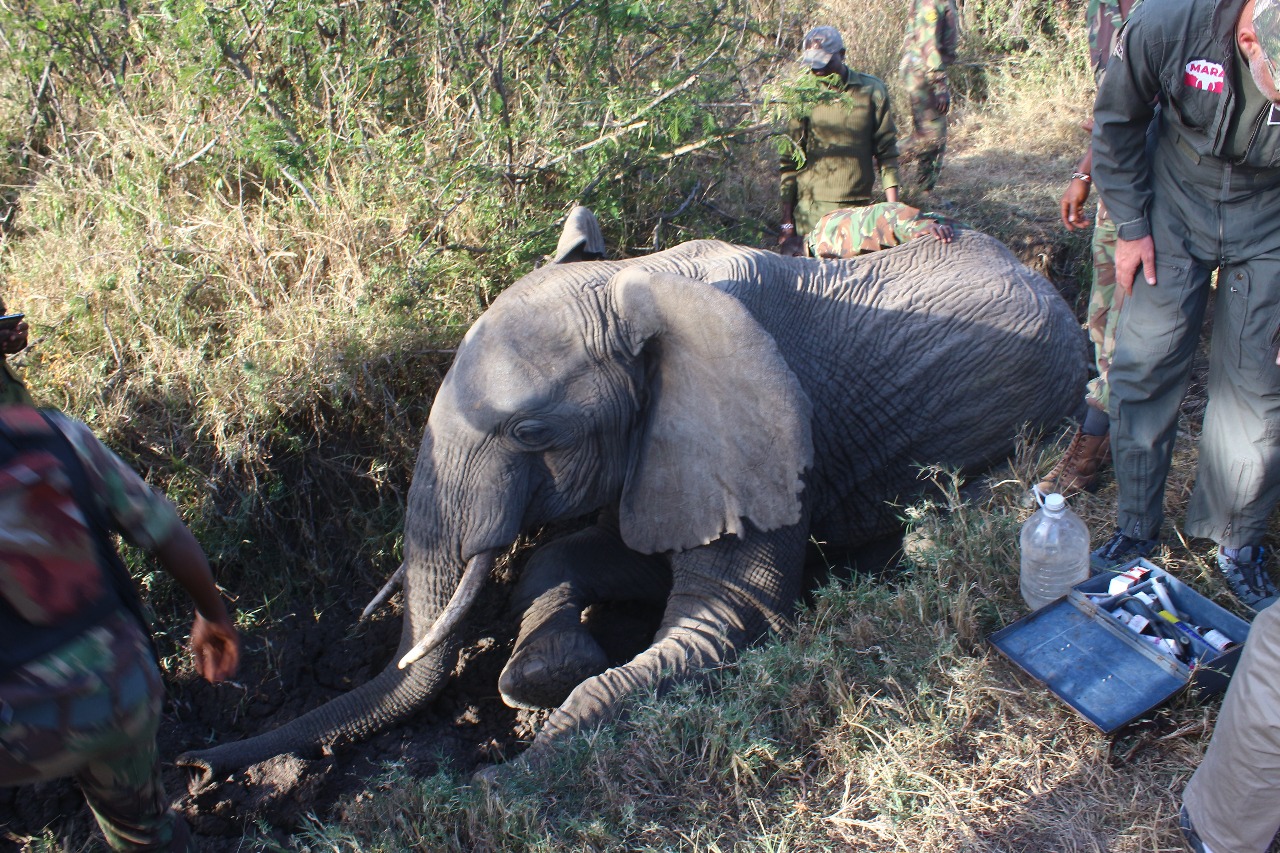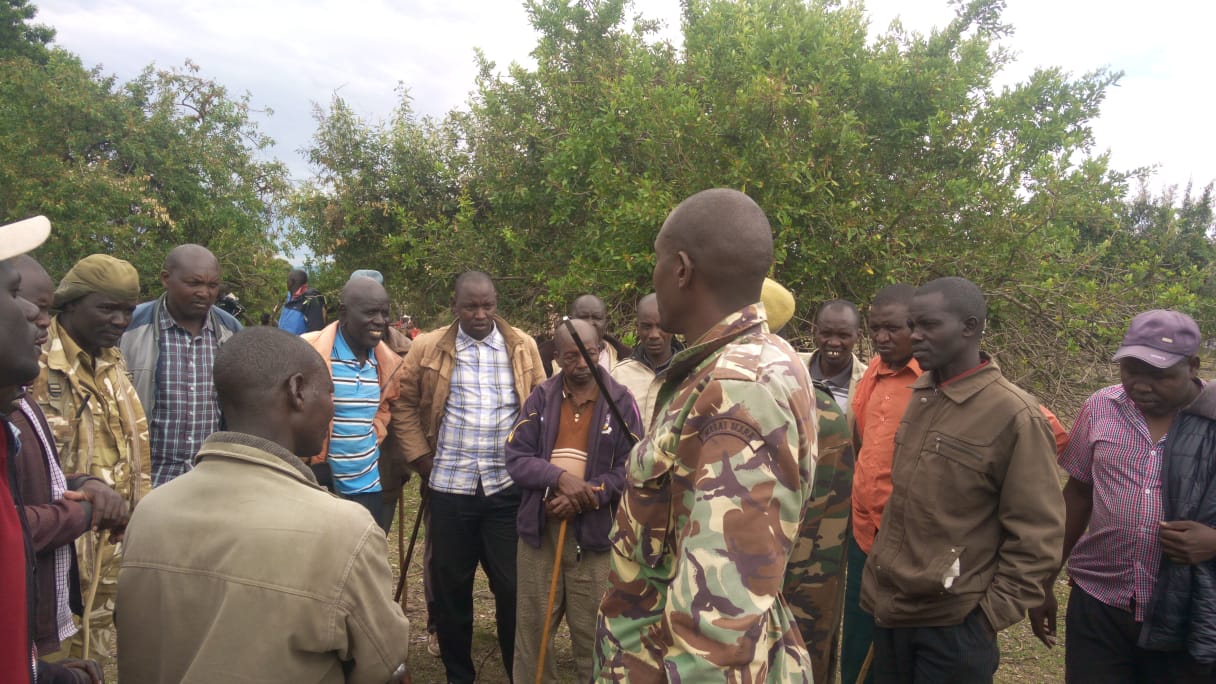
This picture shows the Mara River boundary with the Mara North Conservancy in the foreground and community land in the background.
The MEP helicopter and rangers got there just in time as the villagers were using arrows and spears to attack the elephants. MEP C.E.O. Marc Goss used the helicopter to quickly move the elephants along before injuries occurred but unfortunately an older calf was unable to keep pace with the group and received 20 arrow wounds before crossing the Mara River into safety! Two other members of her herd also suffered injuries caused by arrows.
The elephant calf with the 20 arrow wounds.
So, the human-elephant conflict mitigation mission then became a mission to save this elephant’s life. Kenya Wildlife Service vet Dr. Limo was called in from the David Sheldrick Wildlife Trust Mara Mobile Vet Unit and it was an all-hands-on-deck situation with time of the essence. MEP, KWS, Narok County Government, MEP rangers and C.E.O. and Dr. Limo’s staff all had to help out to remove the 20 arrows from this poor calf. After she was taken care of, we then treated the other two individuals and pulled out four arrows from them.
It was all hands on deck with MEP, KWS and DSWT staff all helping to treat this calf.

Dr. Limo working hard on one of the wounds.
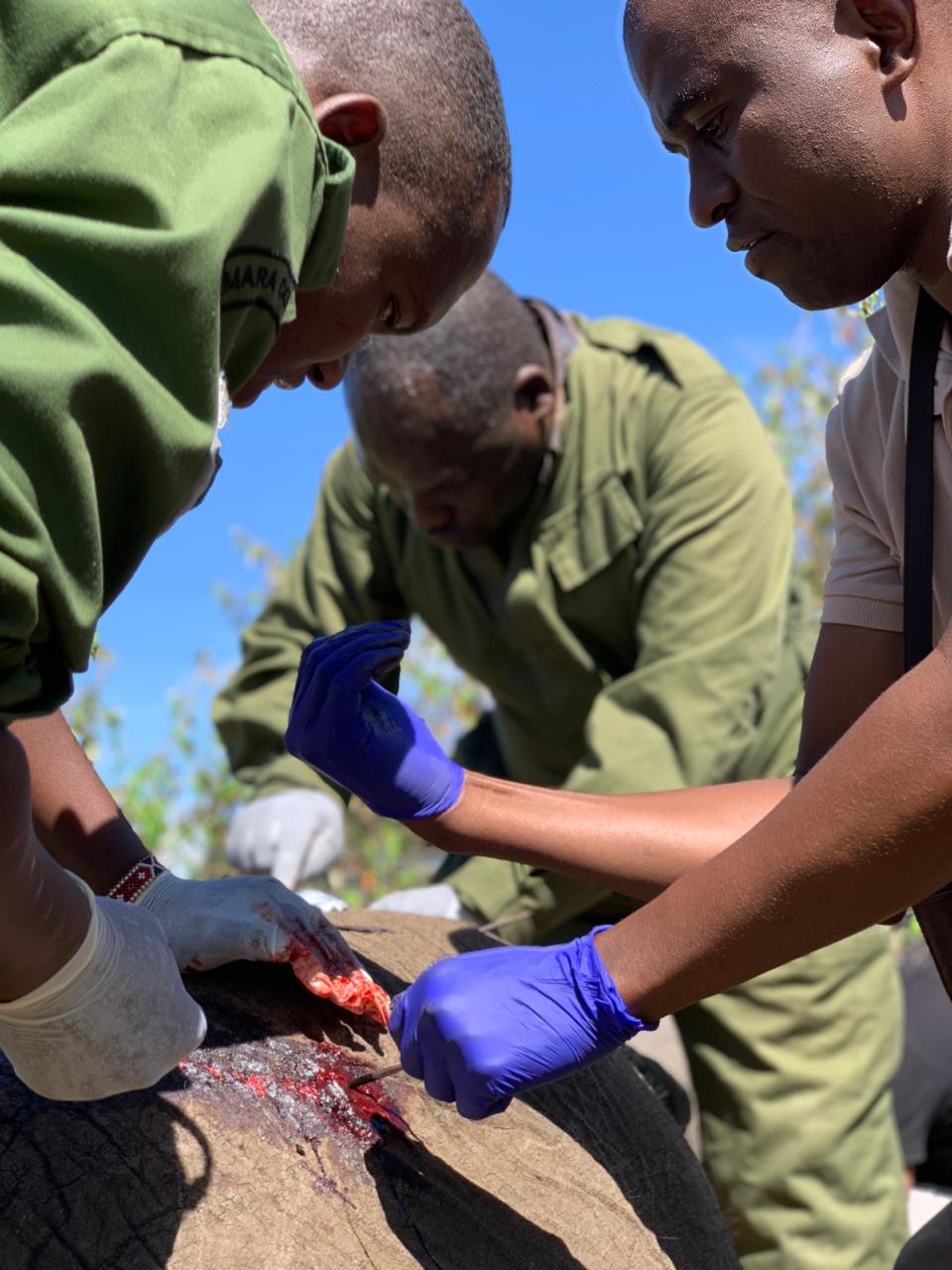
Felix from the DSWT Mara Mobile Vet Unit working with a MEP ranger.

MEP C.E.O. Marc Goss even had to jump in on the treatment.
The 20 arrows pulled from the calf.
Soon after finishing this treatment we received a report from the MEP patrol team in Olarro Conservancy that there was a bull elephant with an arrow wound that needed immediate attention. We are pleased to announce that with this team effort, the calf and all of the elephants treated that day are expected to make a full recovery.
The bull elephant treated in Olarro.
There is a war of space going on in the Mara ecosystem and working with the community to live alongside wildlife is a key approach to ensuring MEP fulfills our mission. There is no winner in human-elephant conflict situations, but what MEP can guarantee is that we will show up, provide support for the community and ensure elephants are protected in the process. However, for this to be the case, the community must work with MEP and allow us to do our job in high stress situations. This was not the case with this Mara River herd.
It appeared that the crowd attacking these elephants were doing so for the pure sport of it as there were no ripe crops in the area at the time and no one reported damage to private property. So, a meeting was called on October 31 with the elders of this community across from the Mara River. Representatives from both KWS and MEP were in attendance and the elders from the community asked for forgiveness for the young men who attacked the elephants. Our combined statement was that though we appreciate the elder’s sentiment, it was not good enough as these elephants were attacked aggressively for no apparent reason. Secondly, they continued to attack the herd after MEP and KWS arrived on the scene which should have been their cue to hand over the situation. We settled that the suspects we are able to identify would be prosecuted and that next time the elephants cross the river they will stay in their houses while the authorities and MEP handle the situation.
The community meeting that took place on October 31.
Mara Elephant Project will deploy all of our techniques and technologies to keep the elephants inside Mara North Conservancy. Our ranger presence along the Mara River should help stop elephants from crossing into community land, but ultimately, we need to build a fence on the far side of the river to keep the elephants and hippos out of private farm land. Though it’s not an ideal solution, as this is a traditional corridor for elephants, it might just save their lives down the road as this community continues to grow.
